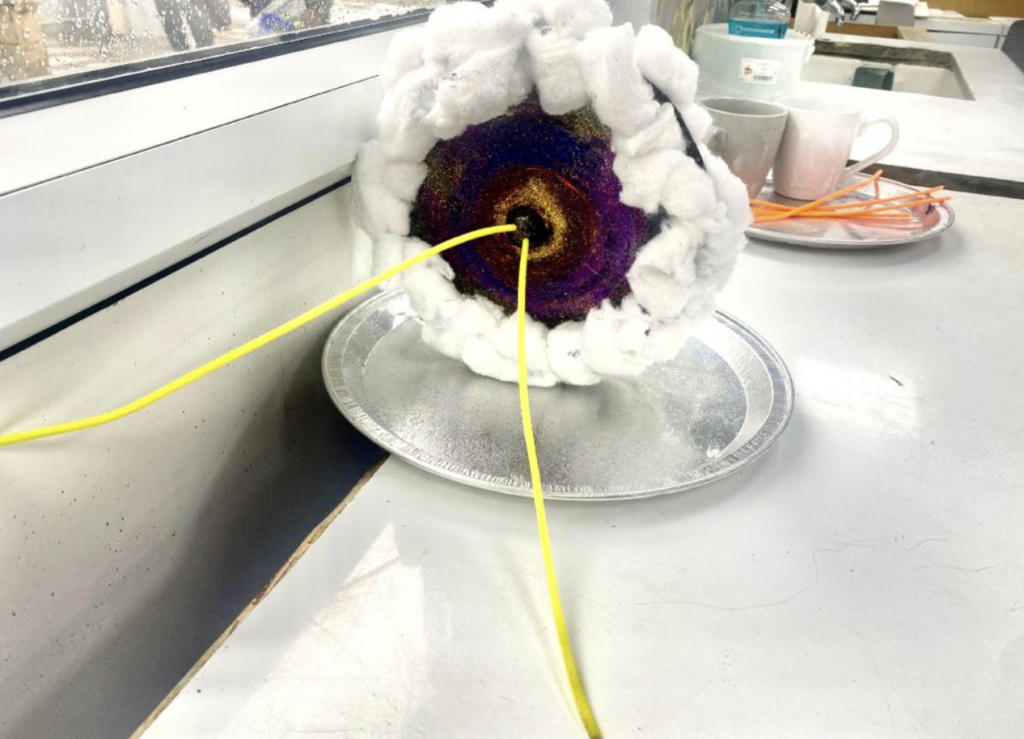Last week, PhD student Houda Haidar and Native Scientist coordinator Hania Tayara, partnered to organise an astronomy demonstration for Arabic-speaking refugee and asylum-seeking children. The demo was part of a broader scientific workshop that was held at Newman Catholic College in London. Houda’s demo focused on black hole physics and included three main activities.
The first activity helped the children understand the concept of density. This was demonstrated using a golf ball and a larger foam ball, to show that the biggest objects are not always the ones with the most mass.

The second activity involved understanding space-time curvature. The golf ball and the foam ball were dropped on a scarf, which represented the “fabric” of space-time. The children could then observe which object led to deeper curvatures in the scarf.
The third activity involved understanding how accreting black holes obscured by dusty materials can be detected using a mid-infrared camera. Houda used a black bag to represent the dusty torus of accretion material, which can obscure accreting black holes. Despite the black bag preventing Houda from being seen by human eyes (or a camera in the optical wavelengths), with an infrared camera, Houda could be seen behind the black bag.

Other scientists from different disciplines (e.g., medicine, biology) also presented engaging demonstrations and tutorials. These ranged from extracting DNA from a strawberry to recording signals from the brain.
